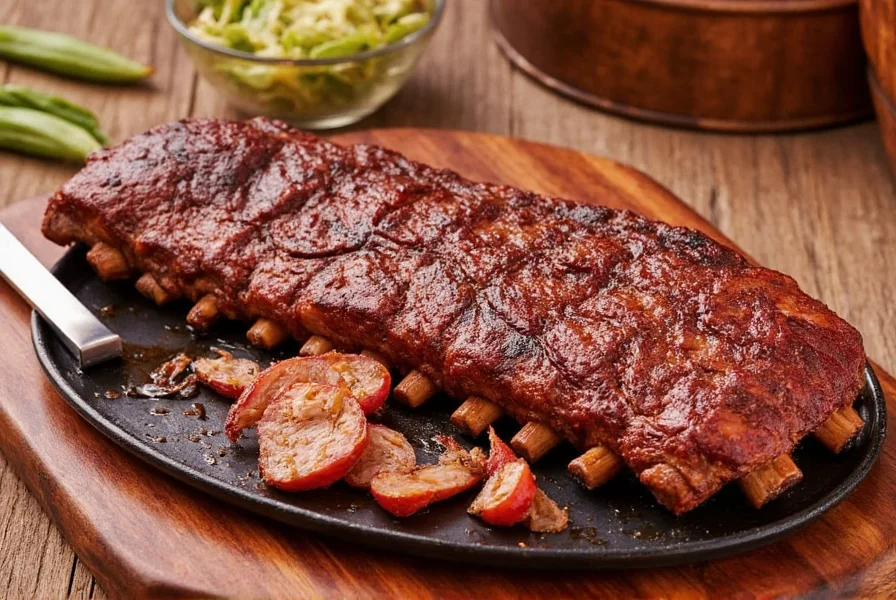Table of Contents
Why Seasoning Matters
Properly seasoned ground beef transforms ordinary meals into extraordinary dishes. Without adequate seasoning, ground beef can taste bland and unremarkable. The key is understanding how spices interact with meat to enhance flavor, texture, and overall appeal. This guide focuses exclusively on mastering the art of seasoning ground beef - no cooking required, just perfect spice application.
Essential Spices for Ground Beef
Every great ground beef dish starts with the right spice combination. Here's what you need to know about the most effective spices:
- Salt: The foundation of flavor. Use 1 teaspoon per pound of meat to enhance natural taste without overpowering.
- Black Pepper: Adds subtle heat and complexity. Use ½ teaspoon per pound for balanced flavor.
- Garlic Powder: Provides savory depth without raw garlic's sharpness. 1 teaspoon per pound creates perfect umami.
- Onion Powder: Enhances sweetness and aroma. 1 teaspoon per pound complements garlic perfectly.
- Cumin: Essential for Mexican-style dishes. Use 1 teaspoon per pound for authentic flavor.
- Paprika: Adds smoky sweetness. Use ½ teaspoon per pound for color and mild heat.
Pro Tip: Always add spices after browning the meat but before draining fat. This allows the spices to bloom in the meat's natural juices for maximum flavor absorption.

Step-by-Step Seasoning Guide
- Brown the meat: Cook ground beef over medium heat until fully browned (no pink remains), breaking it into small pieces with a wooden spoon.
- Drain excess fat: Tilt the pan and use a spoon to remove most fat, leaving about 1 tablespoon for flavor.
- Add spices to the pan: Sprinkle all spices directly into the hot pan with the meat. Do not add spices before cooking - this causes burning.
- Stir thoroughly: Mix continuously for 30-60 seconds until spices are evenly distributed and fragrant.
- Taste and adjust: Take a small spoonful to taste. Add more salt or spices as needed before serving.
This method ensures maximum flavor absorption while preventing spice burning. The key is adding spices after browning but before draining fat - this allows the spices to interact with the meat's natural juices for optimal flavor development.
Spice Combinations for Different Dishes
| Dish Type | Spice Blend (per 1 lb ground beef) | Key Flavor Profile |
|---|---|---|
| Tacos | 1 tsp cumin, 1 tsp chili powder, ½ tsp paprika, ½ tsp oregano | Smoky, slightly spicy, authentic Mexican flavor |
| Burgers | 1 tsp garlic powder, 1 tsp onion powder, ½ tsp smoked paprika, ¼ tsp mustard powder | Rich, savory, with subtle smokiness |
| Spaghetti Sauce | 1 tsp dried basil, 1 tsp dried oregano, ½ tsp red pepper flakes, 1 tsp Italian seasoning | Herbaceous, slightly sweet, traditional Italian |
| Chili | 2 tsp chili powder, 1 tsp cumin, ½ tsp cocoa powder, ½ tsp smoked paprika | Deep, rich, complex heat with chocolate undertones |
Frequently Asked Questions
When should I add spices to ground beef?
Add spices after browning the meat but before draining fat. This allows the spices to bloom in the meat's natural juices for maximum flavor absorption. Adding spices before cooking causes them to burn and become bitter.
How much salt should I use for ground beef?
Use 1 teaspoon of salt per pound of ground beef. This is the ideal amount to enhance flavor without overpowering. Always taste before adding more salt - you can always add more, but you can't remove it.
Can I use fresh garlic instead of garlic powder?
Yes, but with caution. Fresh garlic burns easily. If using fresh garlic, mince it finely and add it after the meat is fully cooked and removed from direct heat. Garlic powder is more reliable for consistent flavor without burning risk.
Why does my ground beef taste bland even with spices?
Common causes include: adding spices too early (before browning), not using enough salt, or using old spices. Always use fresh spices (replace every 6 months), add them after browning but before draining fat, and ensure you're using adequate salt (1 tsp per pound).
What's the difference between regular and smoked paprika?
Regular paprika provides mild sweetness and color, while smoked paprika adds a distinct smoky flavor. Use smoked paprika for chili, barbecue dishes, or when you want that signature smoky taste. Regular paprika works better for milder dishes like meatloaf or spaghetti sauce.










 浙公网安备
33010002000092号
浙公网安备
33010002000092号 浙B2-20120091-4
浙B2-20120091-4